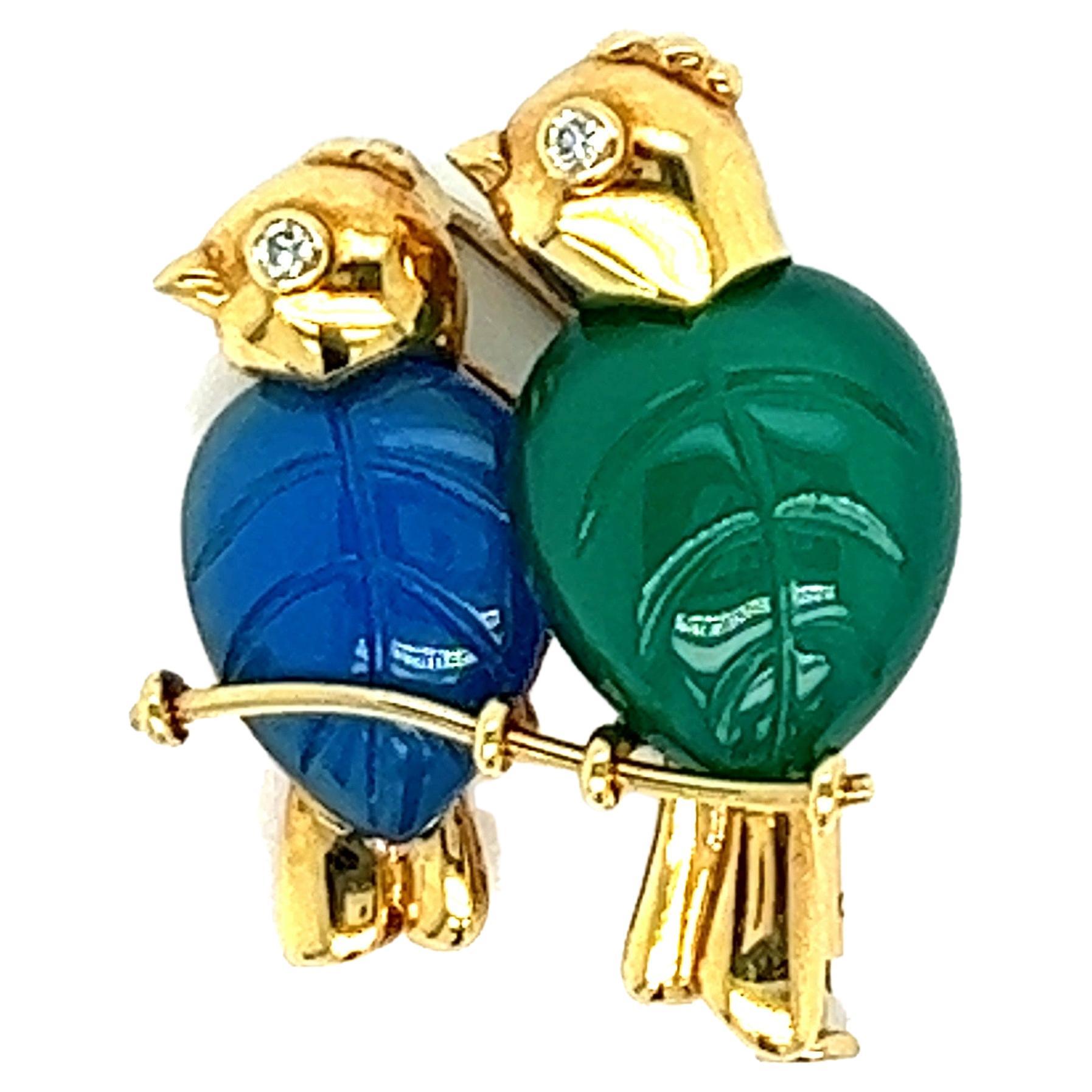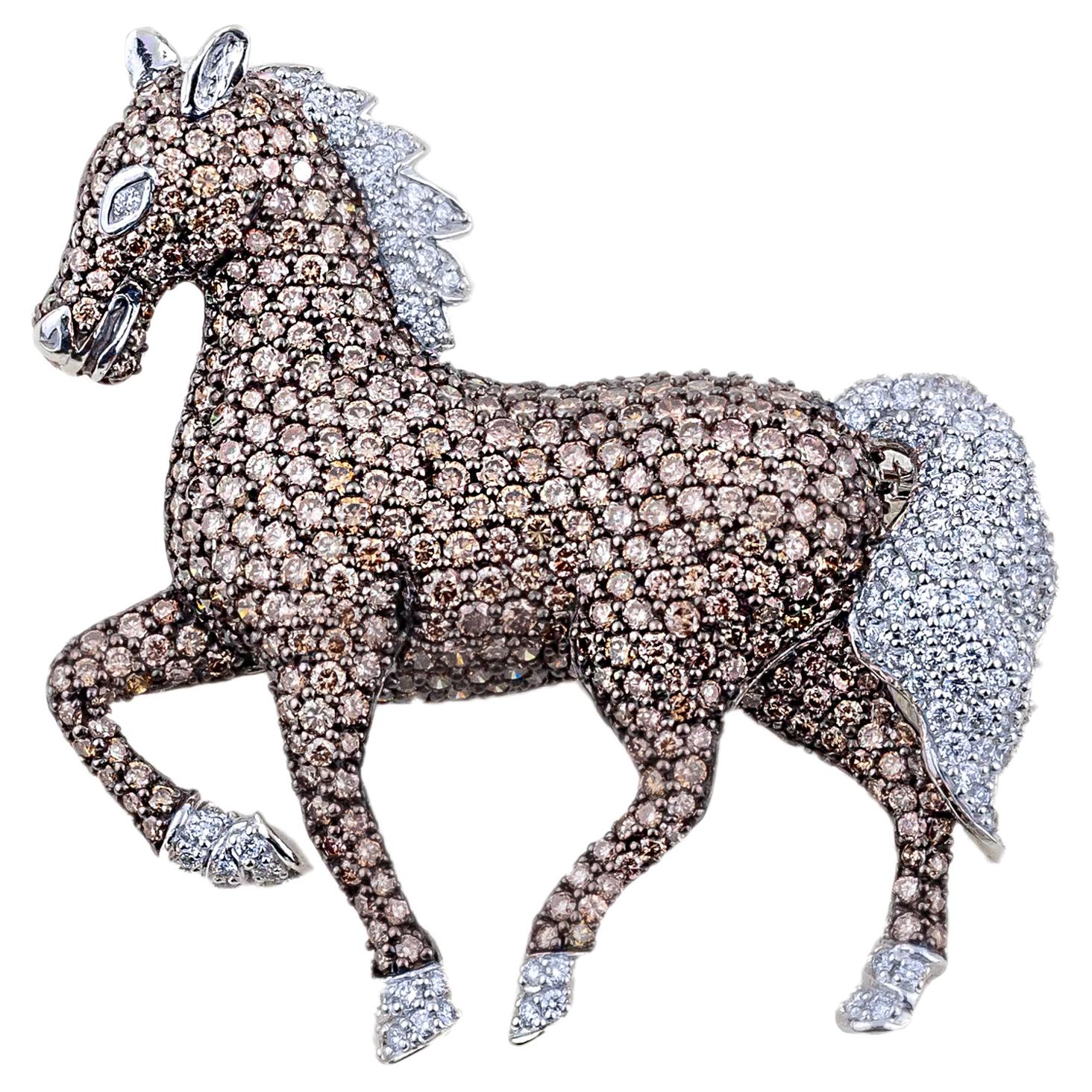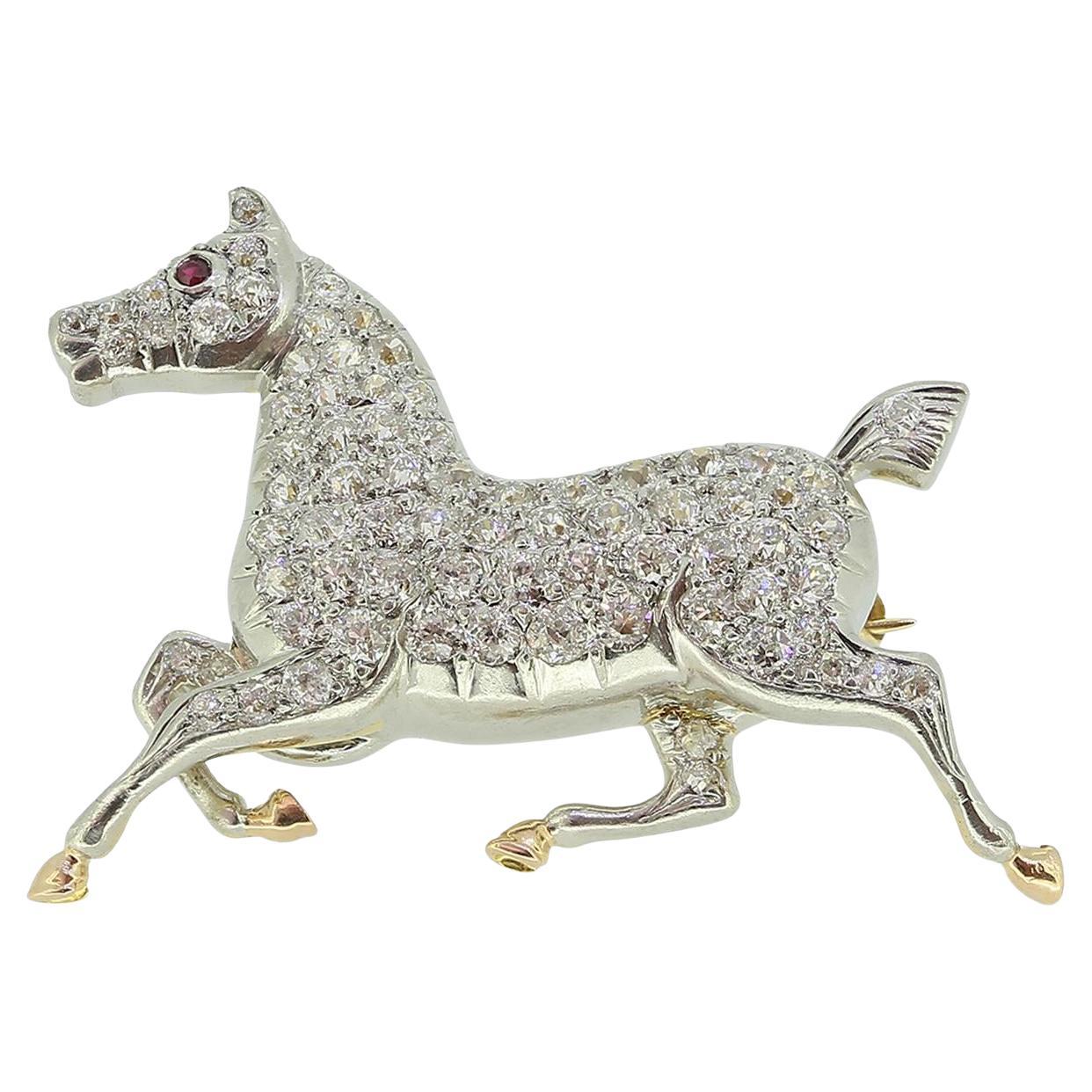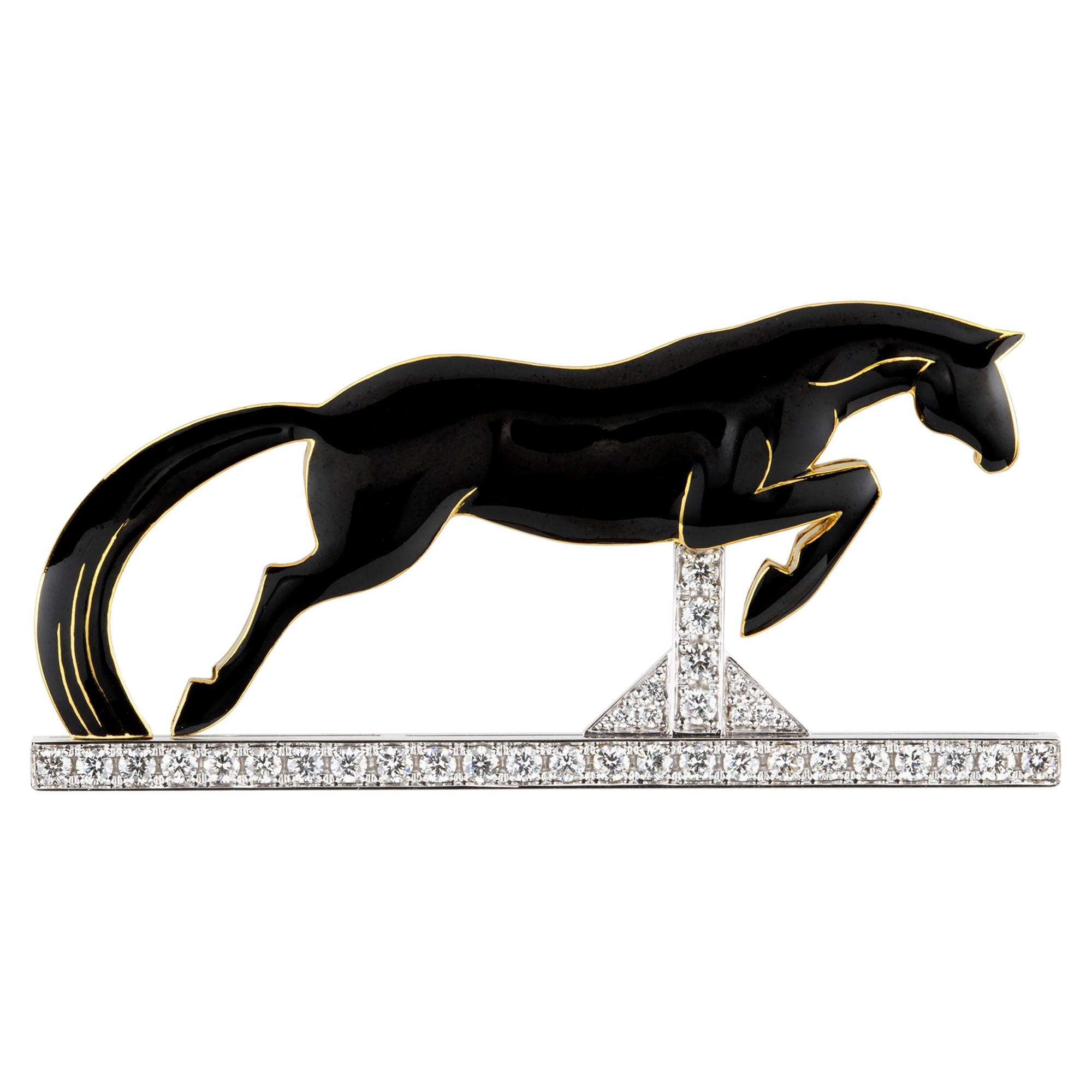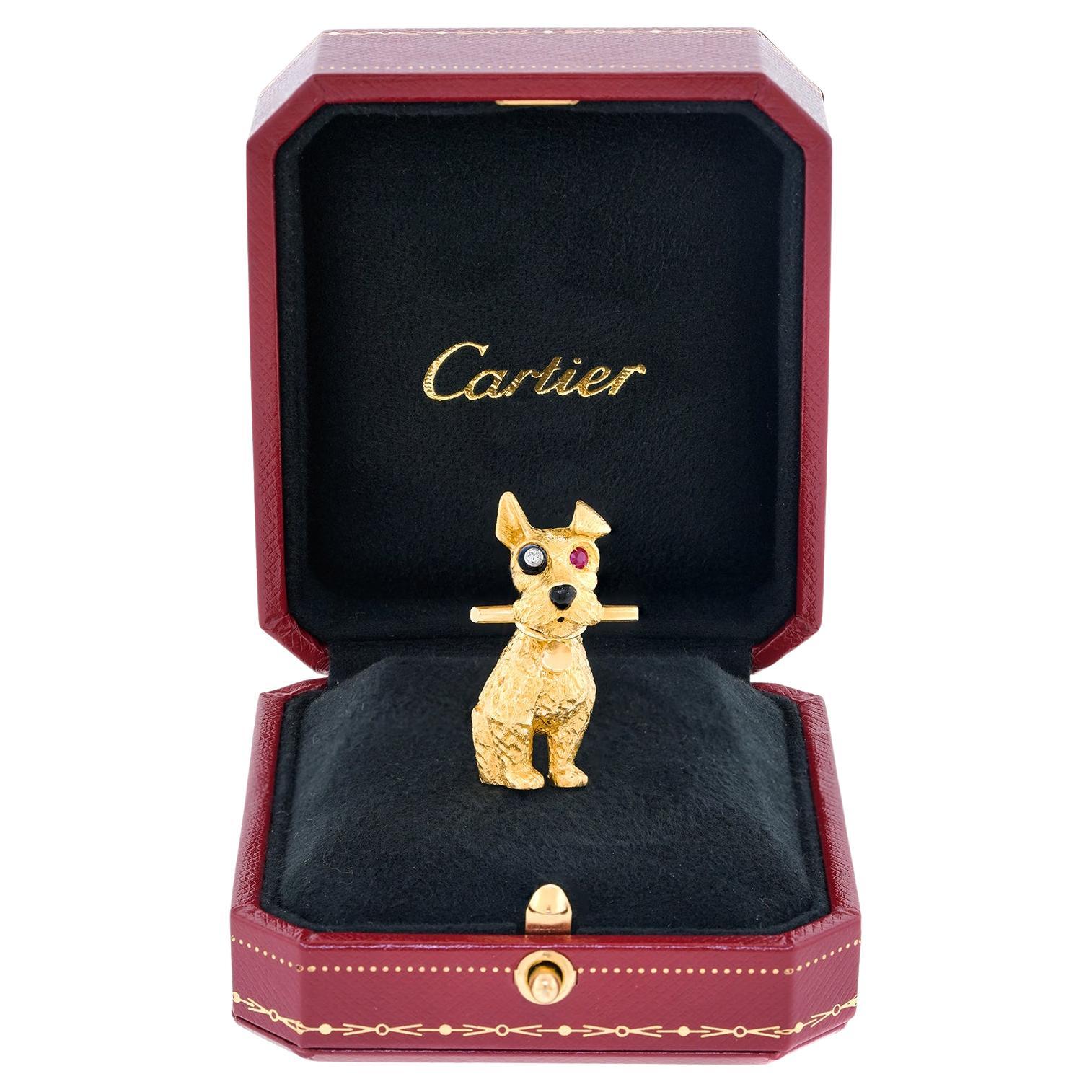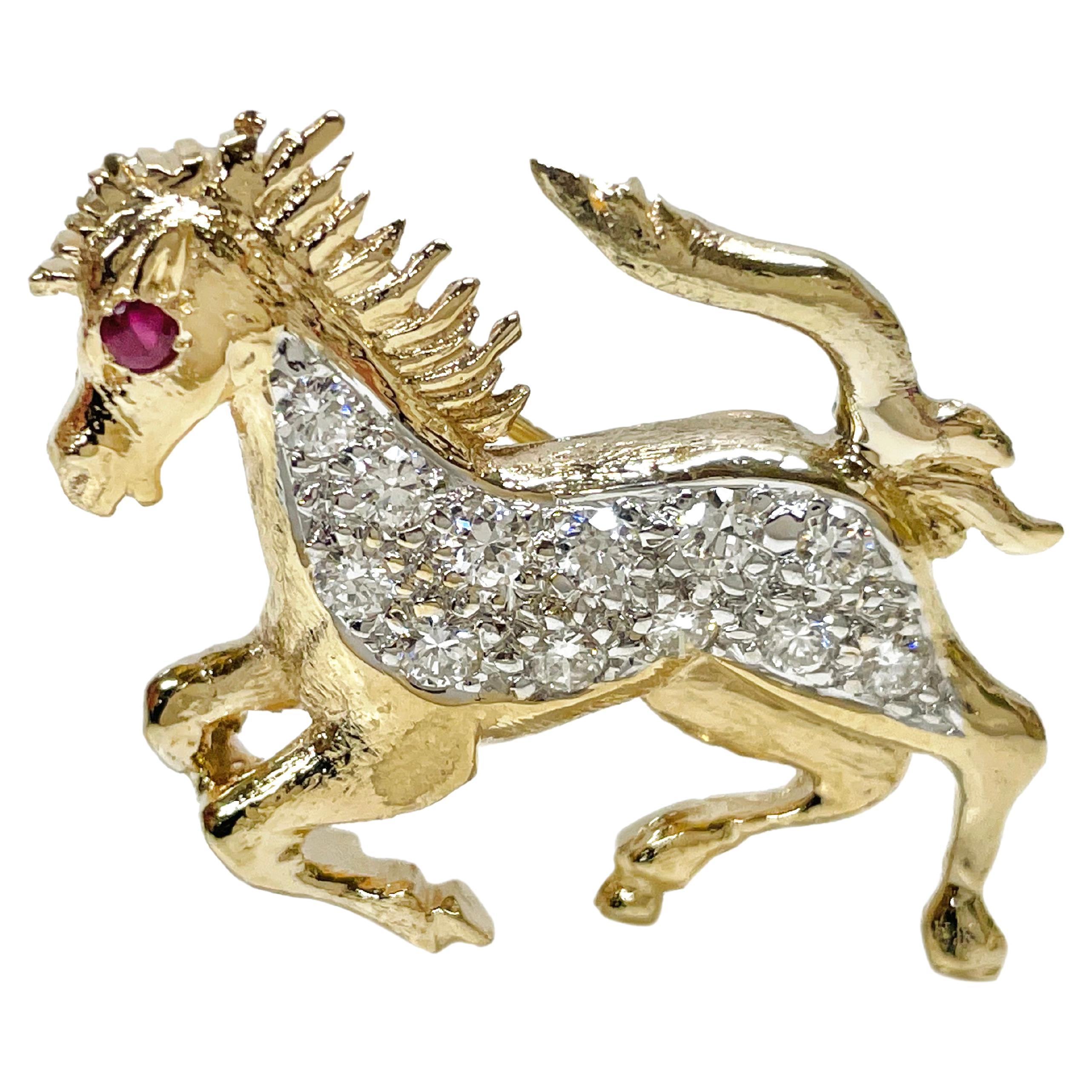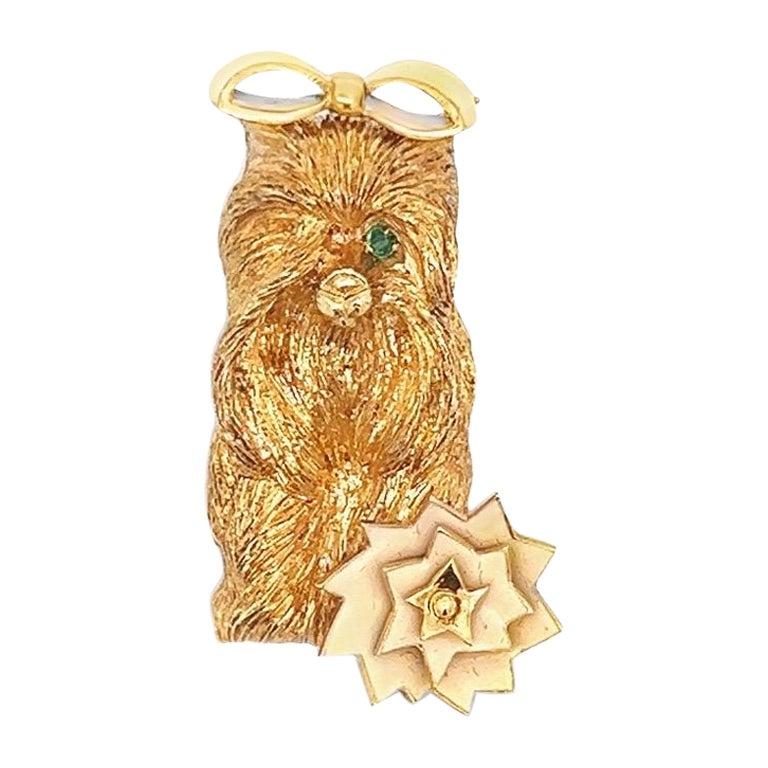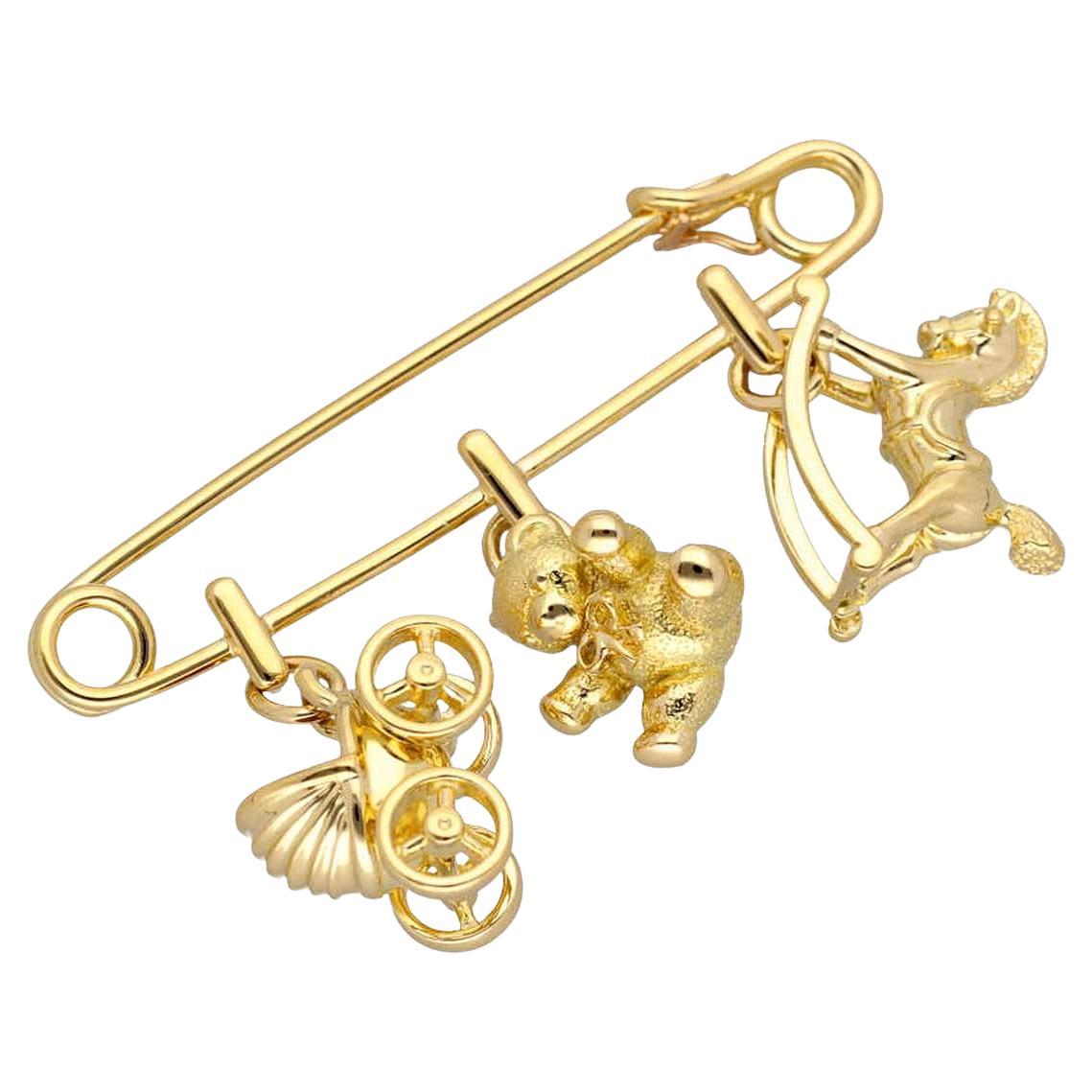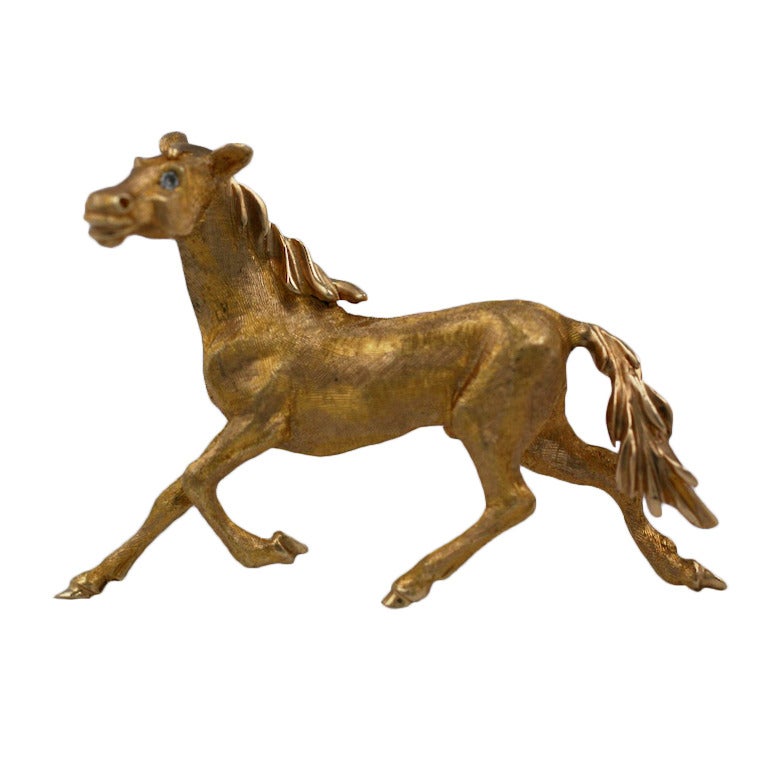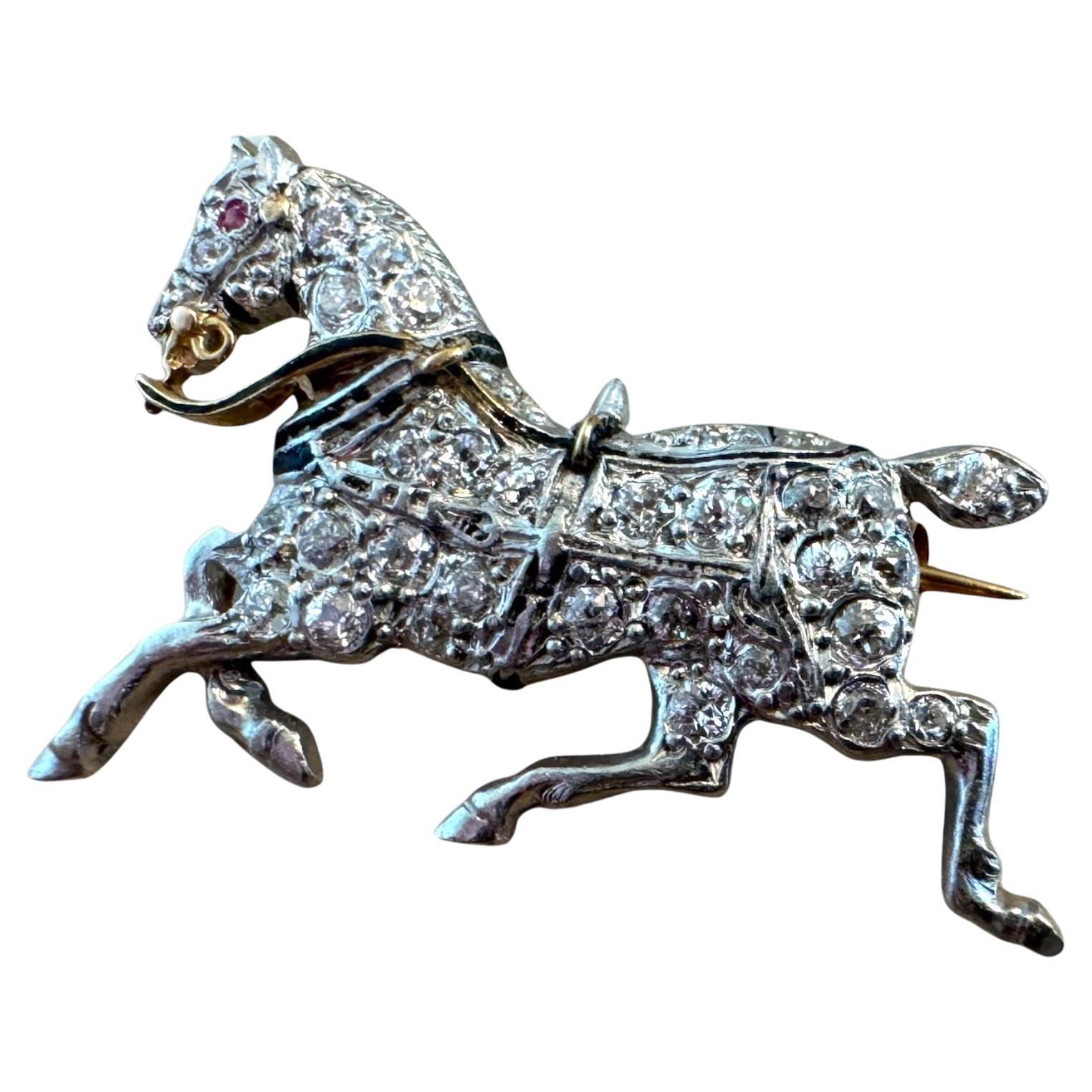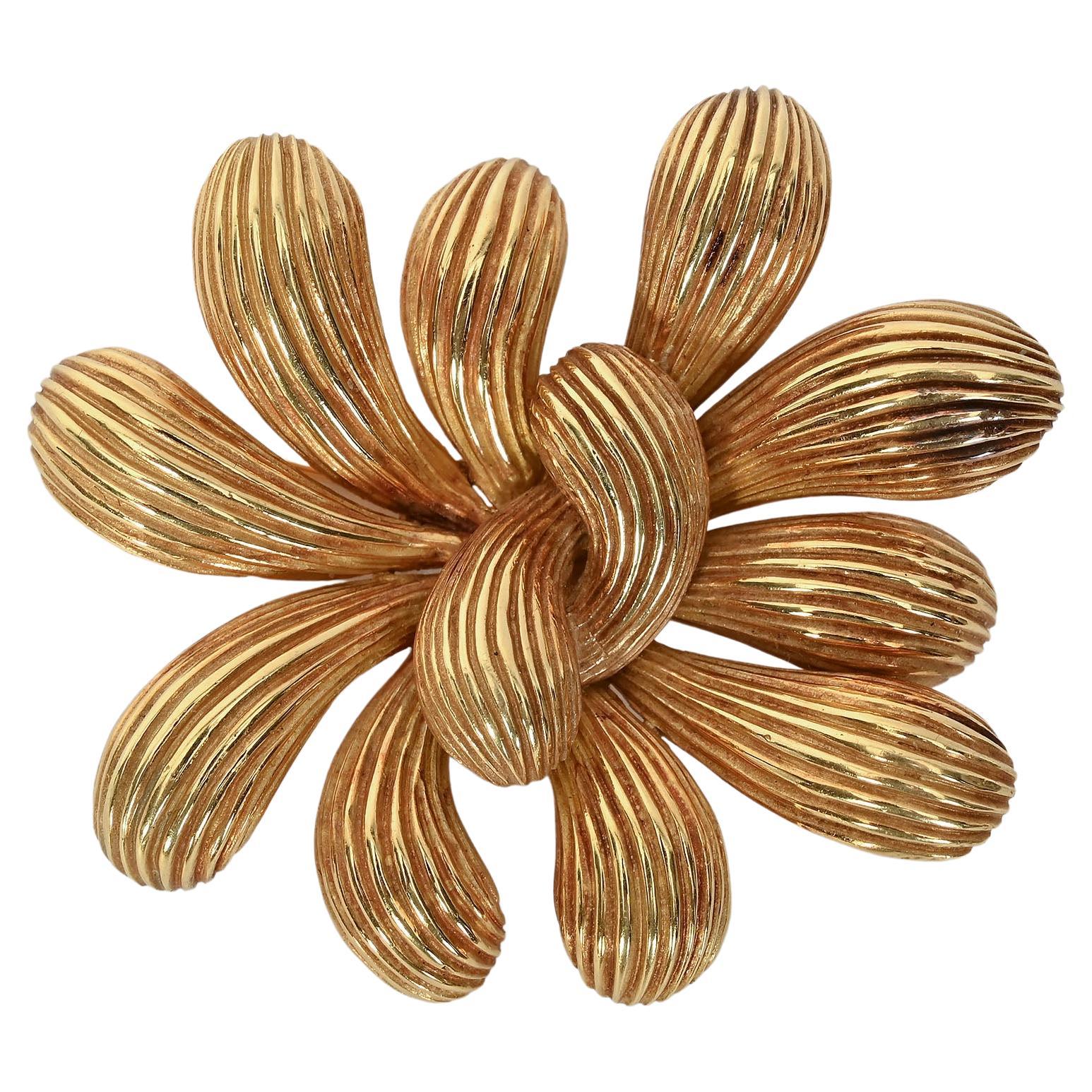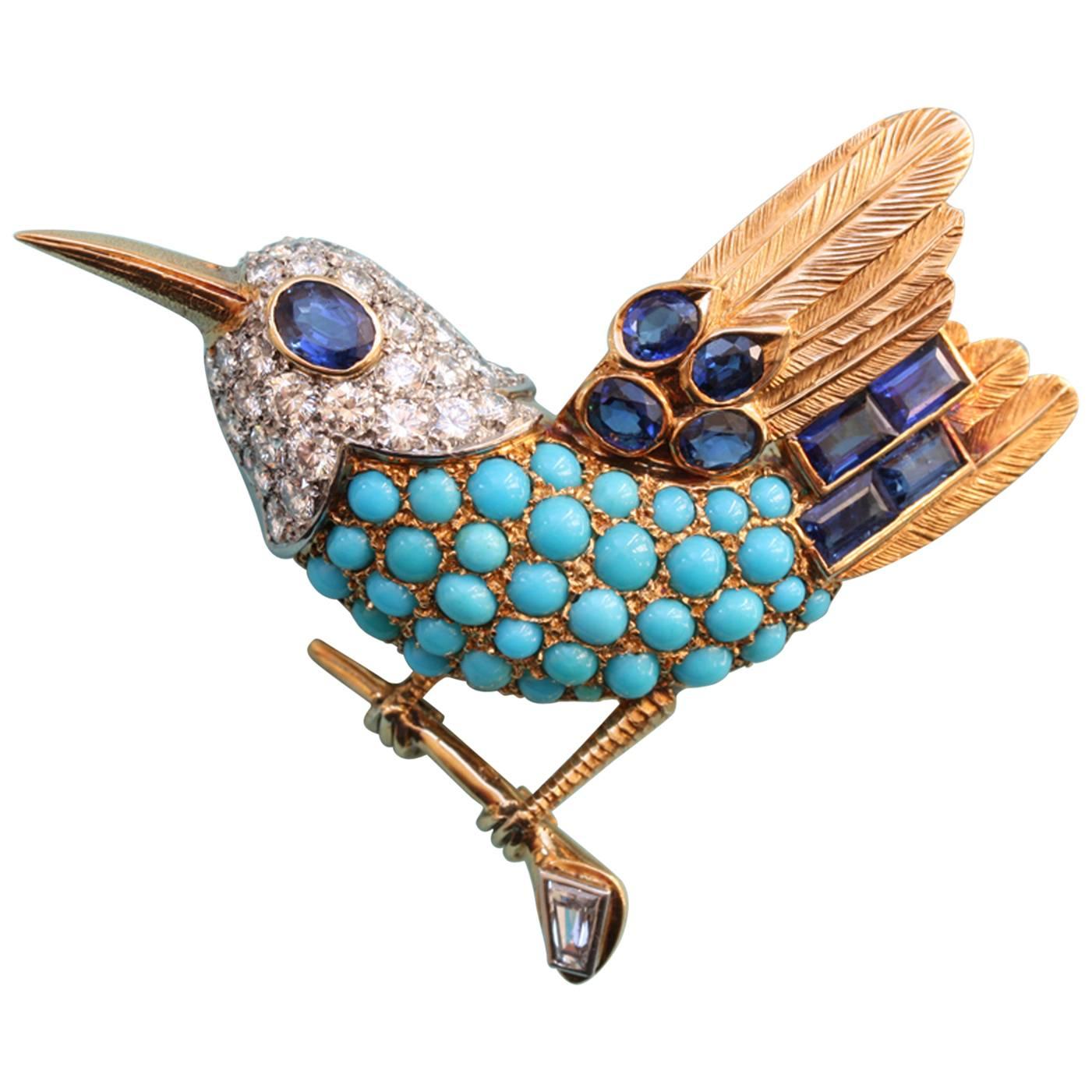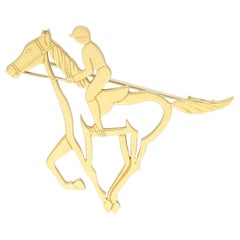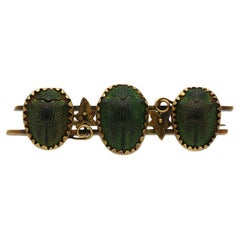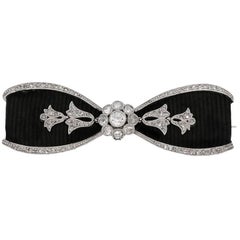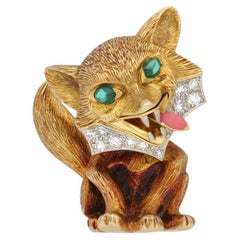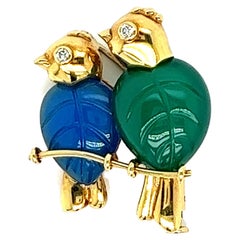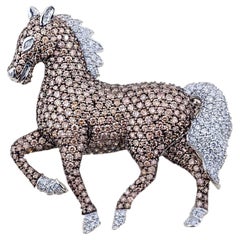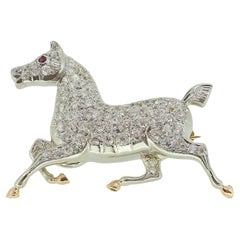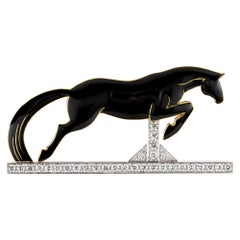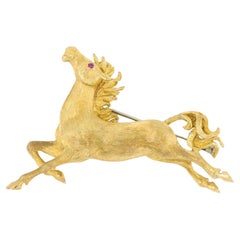
Cartier horse brooch, English, 1974.
View Similar Items
Want more images or videos?
Request additional images or videos from the seller
1 of 5
Cartier horse brooch, English, 1974.
About the Item
- Metal:Yellow Gold
- Stone:Ruby
- Stone Cut:Cabochon
- Dimensions:Length: 1.97 in (50 mm)
- Period:1970-1979
- Date of Manufacture:1974
- Condition:Wear consistent with age and use.
- Seller Location:London, GB
- Reference Number:1stDibs: LU18623069762
About the Seller
5.0
Recognized Seller
These prestigious sellers are industry leaders and represent the highest echelon for item quality and design.
Gold Seller
Premium sellers maintaining a 4.3+ rating and 24-hour response times
1stDibs seller since 2011
64 sales on 1stDibs
Typical response time: 13 hours
Authenticity Guarantee
In the unlikely event there’s an issue with an item’s authenticity, contact us within 1 year for a full refund. DetailsMoney-Back Guarantee
If your item is not as described, is damaged in transit, or does not arrive, contact us within 7 days for a full refund. Details24-Hour Cancellation
You have a 24-hour grace period in which to reconsider your purchase, with no questions asked.Vetted Professional Sellers
Our world-class sellers must adhere to strict standards for service and quality, maintaining the integrity of our listings.Price-Match Guarantee
If you find that a seller listed the same item for a lower price elsewhere, we’ll match it.Trusted Global Delivery
Our best-in-class carrier network provides specialized shipping options worldwide, including custom delivery.More From This Seller
View AllAndré Vassort gold horse brooch, French, circa 1970.
By Andre Vassort
Located in London, GB
André Vassort gold horse brooch. A yellow gold brooch in the form of a horse and rider featuring intricate openwork with carved details and polished edging, the reverse mounted with ...
Category
Vintage 1970s European Brooches
Materials
Gold
Victorian Tortoise Beetle Brooch, English, circa 1875.
Located in London, GB
Victorian tortoise beetle brooch. Set horizontally with three iridescent Brazilian tortoise leaf beetles graduating in size from the centre in closed back claw settings, to a novelty...
Category
Antique 1870s European Brooches
Materials
Yellow Gold
Cartier Antique Diamond Bow Brooch, circa 1910
By Cartier
Located in London, GB
Cartier antique diamond bow brooch. Set to centre with a cushion shape old mine diamond in an open back millegrain setting with a weight of ...
Category
Vintage 1910s Brooches
Materials
Diamond, Platinum
Cartier emerald and diamond fox brooch, circa 1940.
By Cartier
Located in London, GB
Cartier emerald and diamond fox brooch. Set with two oval cabochon natural emeralds in open back rubover settings with a combined approximate weight of 0.35...
Category
Vintage 1940s Brooches
Materials
Diamond, Emerald, Gold, Platinum
Cartier Art Deco Natural Amethyst and Turquoise Brooch
By Cartier
Located in London, GB
Art deco amethyst and reconstituted turquoise brooch by Cartier. Set to centre with an oval old cut natural amethyst in an open back structured claw setting with an approximate weigh...
Category
Vintage 1920s French Art Deco Brooches
Materials
Amethyst, Turquoise, Platinum
John Brogden Shell Cameo Brooch and Earrings, English, circa 1870
By John Brogden
Located in London, GB
Antique shell cameo brooch and earrings by John Brogden, English, circa 1870. A yellow gold suite of jewellery, the brooch composed of a horizontally situated oval Bull’s Mouth shell cameo of the Greek goddess Selene riding a serpentine dragon in a rubover collet setting, encircled by a conforming frame of gold beading and twisted gold wire punctuated with four gold palmette form plaques engraved and decorated with dark blue enamel and placed at the cardinal points, the reverse mounted with a hinged pin and scroll clasp, the earrings each composed of a vertical oval Bull’s Mouth shell cameo engraved with a bust length portrait of Selene with crescent-set headdress, encircled by a conforming frame matching that of the brooch with the addition of a pendant decoration composed of a horizontal bar of gold beading and twisted gold wires suspending gold link chains graduated from centre and ending in conical gold elements, the reverses mounted with French wire fittings, all in a fitted red leather case, the interior marked ‘FIRST CLASS PARIS MEDAL/ 1855.1867.1851/ PARIS FIRST CLASS & LONDON PRIZE MEDALS/ JOHN BROGDON/ Goldsmith/ MANUFACTORY/ 16, Henrietta St. Covent Garden/ London’.
The cameo—defined as a gem, usually either a mineral or a shell, upon which a design has been carved in relief—is believed to have originated in Hellenistic Greece, during the third century BC. These miniature sculptures, at that time confined to the medium of hardstone, are thought to have been made with the primary purpose of personal adornment. The same practice of mounting cameos in jewellery was then continued by the Ancient Romans, and they are known to have been worn by many a Roman emperor.
After the fall of Rome the fashion for cameos went into a decline, until it was again revived during the Renaissance period, brought about by a keen interest in the ancient world. At this time both antique and contemporary cameos were mounted in jewellery, as well as collected as objet d’art. The art of cameo cutting was revived in Italy, where it would remain a centre for the coming centuries. Again there was a lull in interest in carved gemstones, until the Neoclassical revival of the eighteenth century, largely stimulated by the discoveries of the ancient Roman cities of Pompeii and Herculaneum. As with the Renaissance, antique specimens were generally prized over modern cameos, and the worldliest men in Europe held them among their collections of art and antiques. That said, carving centres in Rome and Torre del Greco (near Naples) in Italy were established in response to the demand of the Grand Tourists, who travelled to Italy and Greece to become educated in the wonders of the ancient world. It was at this time that shell cameos, mostly made in Torre del Greco due to its proximity to the sea, became more popular, owing to the relative ease in carving shell over hardstone. In addition to Rome, hardstone cameos also became a specialty of Idar Oberstein, Germany, which had a long history with both the gem mining and cutting trade.
In a shift away from the collector’s cases of the previous century, the nineteenth century saw a strengthening in the fashion for wearable cameos. After the Empress Josephine donned a cameo-set suite of jewellery at the coronation of Napoleon in 1804, cameo jewellery became all the rage. Napoleon played a further hand in promoting the art by establishing a gemstone carving school in Paris, inspired by his appreciation for the arts of the ancient world. By the mid-nineteenth century shell cameos, in part due to their lightness compared with hardstone cameos, were the height of fashion. Large shell cameos as well as hardstone cameos were set into contemporary mounts, often as suites of jewellery. Some of the best cameos of the nineteenth century—carved by a select group of recognized carvers—were set into revivalist mounts, corresponding to the subject matter.
In Victorian England cameo jewellery was particularly prized, due in part to the fact that the Queen owned and wore a number of cameo jewels. One example which can often be seen in official portraits is the Badge of the Order of Victoria and Albert, carved by Tommaso Saulini of Rome, who also produced cameos for the maker of the present suite, John Brogden. To meet demand some carvers set themselves up in London, including William Schmidt, a German carver from Idar Oberstein, who produced cameos for top London jewellers, including Brogden, Carlo Giuliano and Child & Child. In fact, Schmidt purports to have been the first to carve cameos out of opal, which Brogden reportedly displayed in the Paris Exhibition of 1878. An extant example, now in the collection of the British Museum, was set by the Giuliano firm.
Regarding subject matter, cameos throughout time have been largely figural, from bust length profile portraits to scenes with multiple full-length figures, and sometimes animals. Ancient Greek and Roman cameos often depicted mythological scenes as well as contemporary figures. During the Renaissance, mythological scenes were popular, often taken directly from ancient sculpture, as well as portraits of notable contemporary figures. During the eighteenth and nineteenth centuries, due to the revivalist styles, both Renaissance and Classical subjects were copied and set into matching (and sometimes unmatching) revivalist mounts. From the Renaissance through the Victorian era, being able to recognize the source of the carving in a cameo was a mark of erudition, revealing in the wearer knowledge of Classical art.
As mentioned, the present cameo parure...
Category
Antique 1870s English Victorian Brooches
Materials
Yellow Gold
You May Also Like
Cartier Sparrow Brooch
By Cartier
Located in New York, NY
Cartier sparrow brooch
A pair of perching birds formed from carved blue and green chalcedony (13 x 10.5 mm and 14 x 11 mm) with two brilliant-cut diam...
Category
1990s Contemporary Brooches
Materials
Chalcedony, Diamond, 18k Gold, Yellow Gold
Diamond Horse Brooch
Located in Bad Kissingen, DE
750 white gold
Hallmarked 18k
6,74ct brown diamonds
1,47ct white diamonds
Size: approx. 5 x 5 cm
weight: 26,8 grams
Category
2010s Unknown Brooches
Materials
Diamond, Brown Diamond, 18k Gold
Antique Diamond Horse Brooch
Located in London, GB
Here we have a fabulous brooch crafted from platinum and 18ct gold into the shape of a galloping horse. This dynamic horse design has been expertly handcrafted and adorned with a stu...
Category
Vintage 1910s Edwardian Brooches
Materials
Diamond, Gold, 18k Gold, Yellow Gold, Platinum
Horse Brooch by Ilgiz F
Located in London, GB
A horse brooch by Ilgiz F, the realistically carved black enamelled horse jumping over a diamond-set fence, the diamonds weighing 0.56 carats in total, all mou...
Category
2010s Russian Modern Brooches
Materials
Diamond, 18k Gold, White Gold, Yellow Gold
Cartier Whimsical Dog Brooch
By Cartier
Located in Litchfield, CT
Circa 1950s, 18k, by Cartier, Paris, France. This delightful Terrier pin by Cartier is the perfect whimsical accessory. Charming animal brooches were all the rage in the fifties, six...
Category
Vintage 1950s French Brooches
Materials
Diamond, Ruby, 18k Gold, Yellow Gold
Diamond Ruby Horse Brooch/Pin
Located in Palm Desert, CA
18 Karat Yellow Gold Diamond Ruby Horse Brooch/Pin. The brooch features twelve 2mm round diamonds for a total carat weight of 0.24ctw. The brooch measures 2...
Category
2010s American Contemporary Brooches
Materials
Diamond, Ruby, Yellow Gold, Gold, 18k Gold, White Gold
Recently Viewed
View AllMore Ways To Browse
Jc Jewelry
Cartier Horse Brooch
Vintage Button Brooch
Vintage Marcasite Brooch
1930s Marcasite
1940s Bow Brooch
Abalone Brooch
Antique Gold Scottish Jewelry
Antique Lava Cameo
Antique Mosaic Pin
Antique Owl Brooch
Antique Tiffany Pins Brooches
Augustine Brooch
Bakelite Pin
Bone Brooch
Bulldog Jewelry
Bunny Jewelry Vintage
Cartier Hand Brooch
